This informal report by the Division of Entomology & Plant Pathology is a commentary on insects, diseases, and curiosities division staff encounter on a week-to-week basis. Comments and questions about this report are welcome and can be sent to your respective Inspector.
Our Website
Inspector Territories
Diane Turner (Nursery Inspector & Compliance Officer) –
Tomato spotted wilt virus (TSWV) is a well-known Tospovirus that is associated with a thrips vector. TSWV is believed to have the widest host range of any plant virus, infecting more than 900 plant species. The photographs below were taken at a recent inspection, showing a Hosta ‘Barbara Ann’ container displaying viral leaf symptoms including necrosis, chlorotic rings, and mottled ring patterns. This sample was sent to the Purdue Plant and Pest Diagnostic Lab and was confirmed to be infected with TSWV.
TSWV is extremely difficult to manage because of the wide and overlapping host ranges for this virus and its vectors. Once a plant is infected, no chemical treatments can cure it. Thus, avoidance is a common management strategy, for instance, the exclusion of thrips from production areas to reduce infection by TSWV.
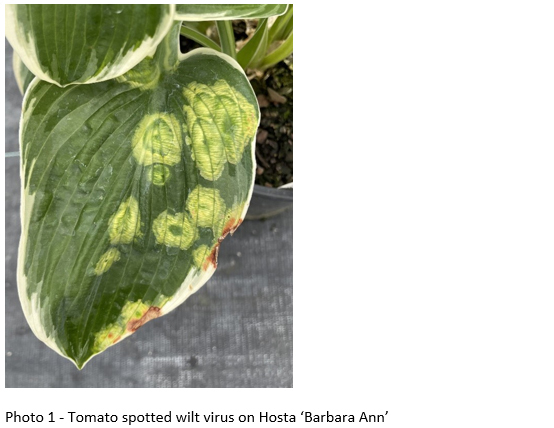
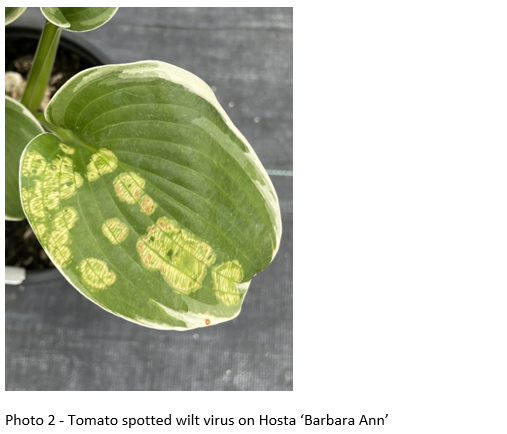
Jared Spokowsky (Nursery Inspetor & Compliance Officer) -
Nothing too extraordinary was found last week. I did see a pretty extensive amount of herbicide damage, but I don’t think it was drift. I have a feeling this was self-inflicted by the nursery.
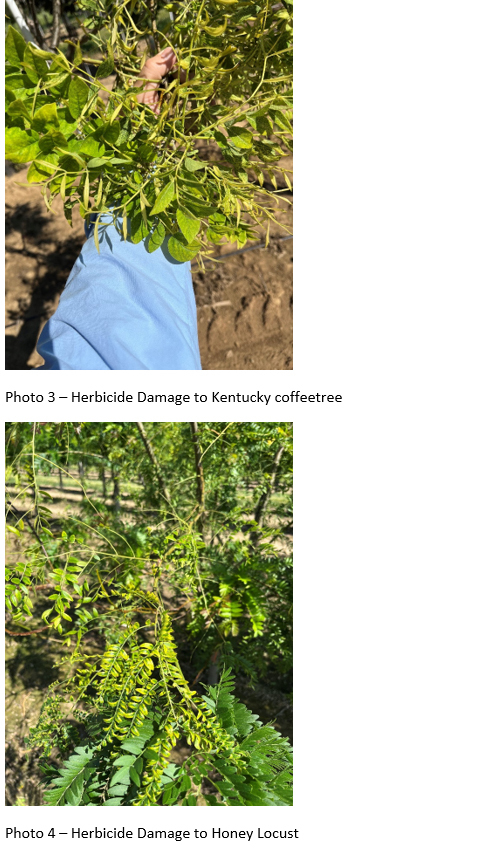
I got distracted while playing kickball with my kids which promptly elicited the response “Dad’s taking pictures of bugs again.” I spotted a five-banded thynnid wasp (Myzinum quinquecinctum) which are parasitoids on scarab beetles. For more information on this species please follow this link.
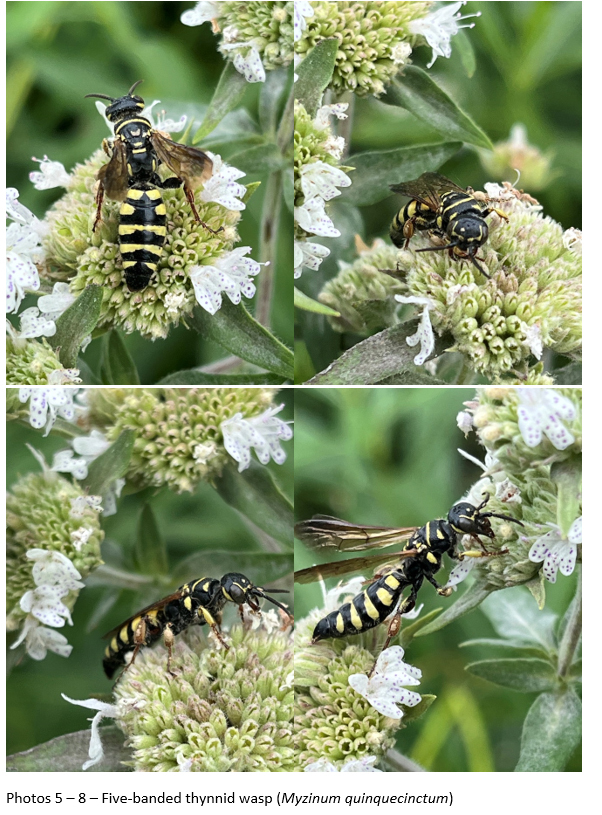
Finally, an update on the yellow-legged hornet situation in GA.
- Total traps deployed (August 2023 - July 2024): 1,029
- Hornets found (July 4, 2024 - July 18, 2024): 53 workers / 22 queens
- January 2024 - July 2024: 4 embryo nests; 4 primary nests; 3 secondary nests
Will Drews (Nursery Inspector & Compliance Officer) -
A couple of nurseries in my area have been dealing with a tough nursery pest issue: foliar nematodes. Foliar nematodes are nematodes (i.e., microscopic round worms) mostly in the genus Aphelenchoides. Most nematode species are found in the soil and are an important part of soil ecosystems. However, some species are parasitic and impact plants, animals, and even humans. Most plant parasitic nematodes affect the roots of plants, but some species in the Aphelenchoidesgenus feed on the foliage of a number of plant species, including ornamental perennials, trees, shrubs, fruits, and vegetable crops.
The clearest sign of foliar nematode damage is the angular leaf spots that develop in between leaf veins. Foliar nematodes will both feed on the outside as well as inside of host leaves. Their stylets (aka piercing mouthparts) are used to feed on the plant tissue and cause the interveinal leaf spots. The angular leaf spots will often start lightly discolored, and then after more feeding, will turn browner and eventually cause dead patches. At any point in the mid to late summer, a geometric patchwork patterning can be observed on leaves as the foliar nematodes move from one interveinal section to another. Movement to other sections of an individual plant as well as other surrounding plants is facilitated by water, normally overhead irrigation or rain.
Control of foliar nematodes is very difficult because of their size and their ability to feed within plant leaf tissue. There are no chemical control options for homeowners and very few for only a couple of crop production scenarios. Some dormant hot water treatments have been used to successfully control foliar nematodes; however, incorrect timing and temperature can lead to either plant mortality or ineffective nematode control. Most extension sources recommend proper sanitation, watering practices (e.g. drip instead of overhead irrigation), and prevention as the best way to avoid foliar nematodes. If foliar nematodes are found on plant stock, the infected material should be disposed of as soon as it is noticed by removing and bagging it.
Here are some of the pictures I have taken recently of foliar nematodes and their damage:
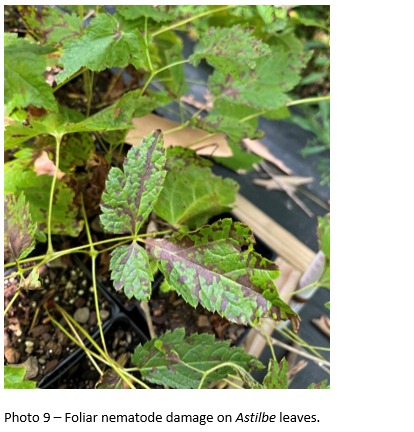
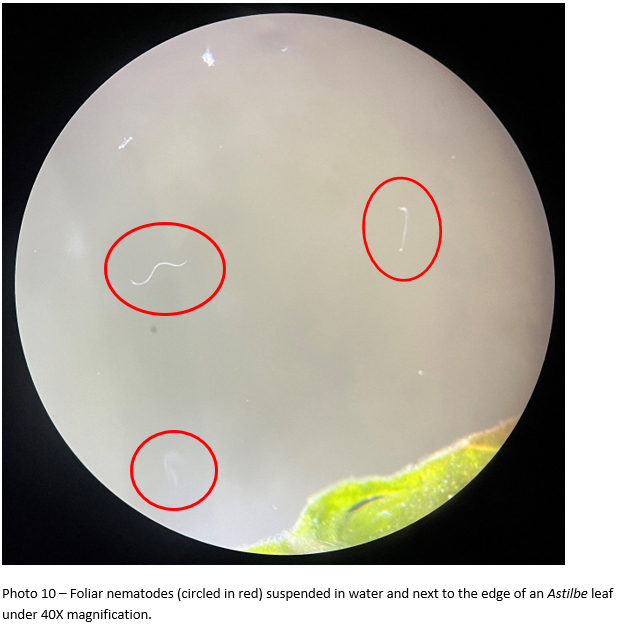
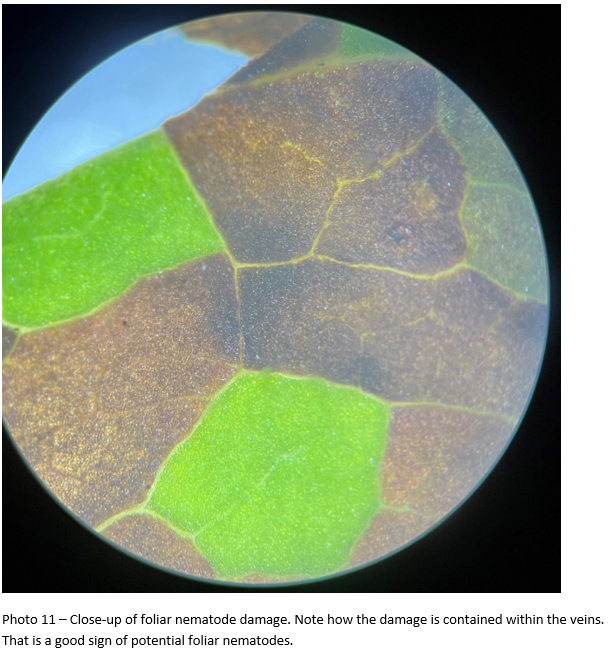
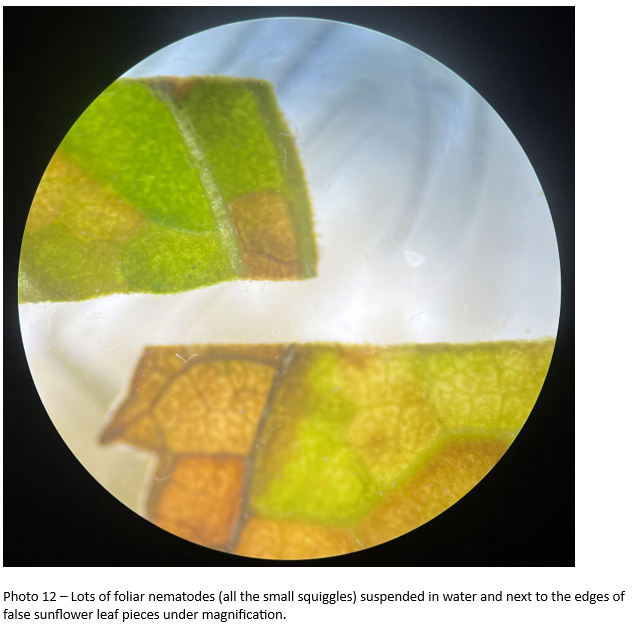
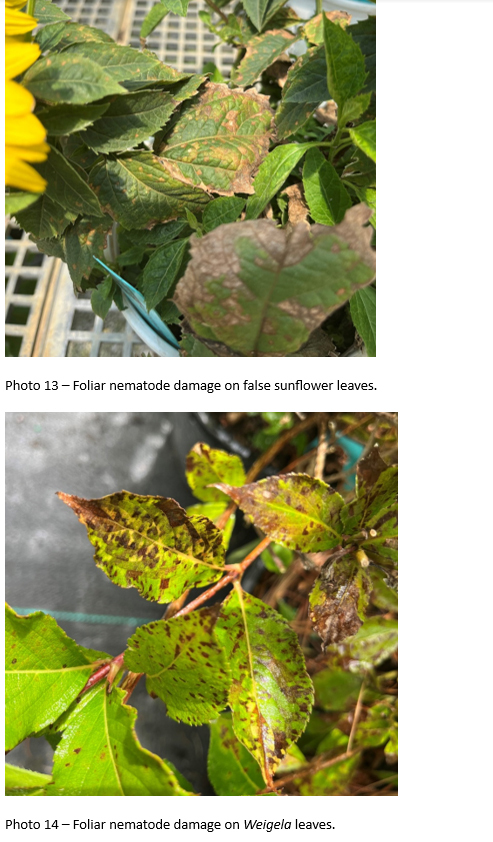

Angela Rust (Nursery Inspector & Compliance Officer) -
This week I have included a photo of lab confirmed Pseudocercospora leaf spot on common purple lilac. This leaf spot is caused by a fungus and is common in the landscape. Please see this link on common lilac diseases. Also Included are two photos showing heavy snail feeding damage on rhubarb.
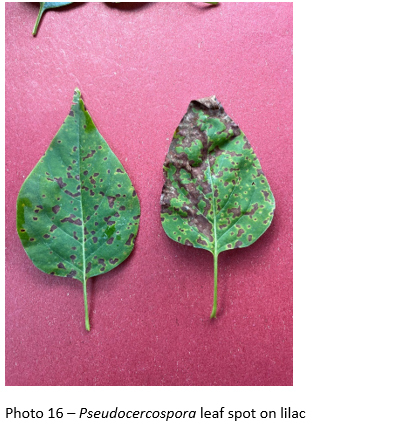

Eric Biddinger (Nursery Inspector & Compliance Officer) -
A few finds from last week’s inspections:
I have been seeing a marked increase in spider mite damage on a wide variety of hosts, both in the field and in poly houses. Two-spotted and maple mites are the more common species I have seen.
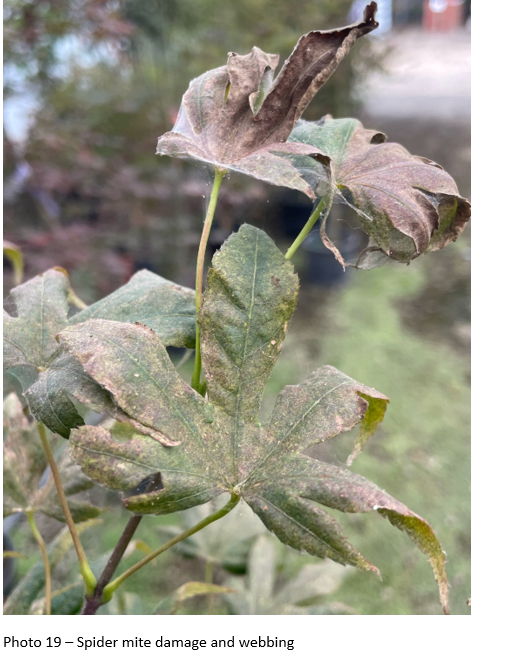
One rhododendron at a nursery had notched leaves. This is an indicator for black vine weevil. As BVW is a regulated pest, this plant needed to be scrutinized closely.
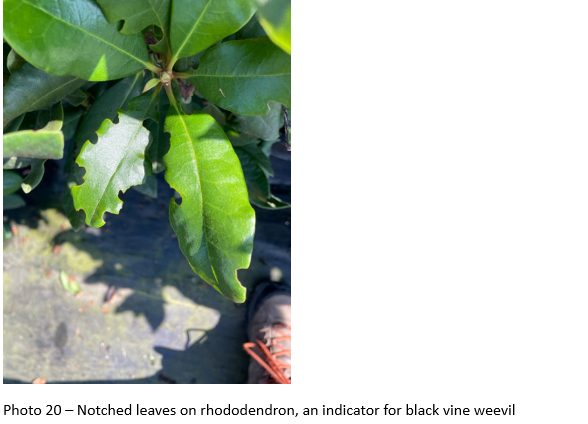
Snail and slug damage can often be overlooked as most of the damage occurs at night. In this case, I almost missed it due to the size!
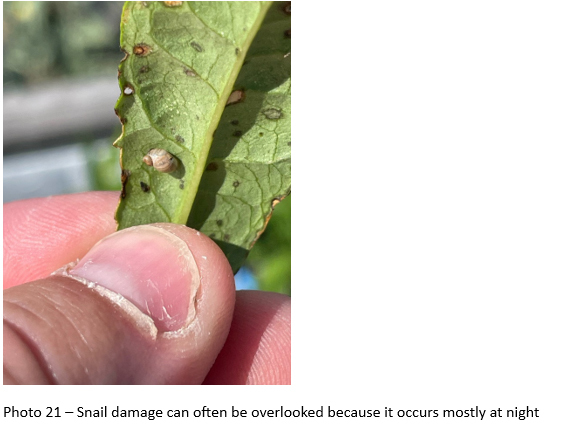
Finally, fire blight pops up occasionally. Here is a lab confirmed case on Asian pear ‘Tawara’.















































